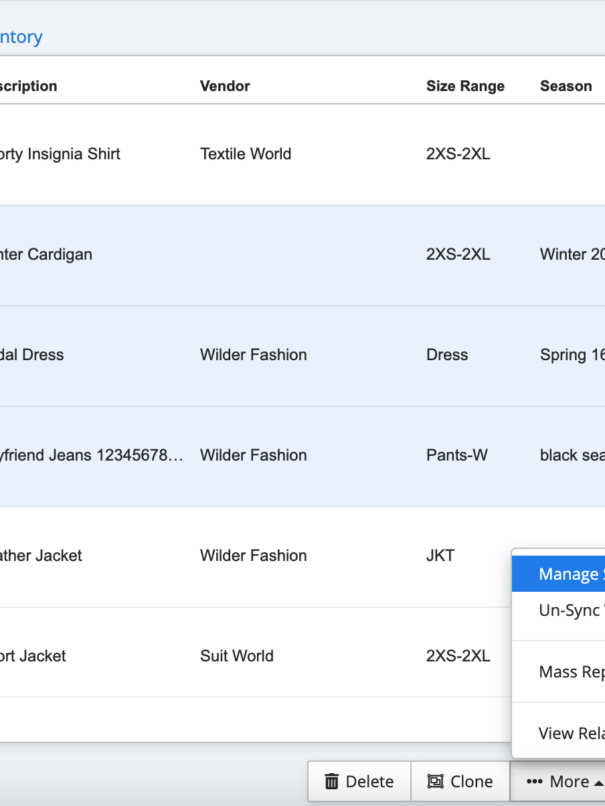Product lifecycle management is the strategic process of managing a product’s entire lifecycle, including its conception, development, servicing, and disposal. A growing interest in product lifecycle management software and its advantages can be seen in a number of different industries since a PLM system is one of the best tools for firms looking to enhance their product offerings, streamline their supply chains, and grow their business.
But what is PLM software? Keep reading to find out more about what PLM software offers, how it is different from traditional systems, how it can benefit your business and more.

Photo by Becca McHaffie on Unsplash
What Is PLM Software?
So, what does PLM mean? PLM is an acronym for Product Lifecycle Management, a method of information management that connects data, people, processes, and business systems across a large company. PLM software enables efficient and economical management of real-time data throughout the entire product lifecycle, from conception, design, and manufacturing to servicing and disposal.
Because it offers a digital basis and enterprise product record for a comprehensive product development process and supply chain management, modern PLM software is increasingly emerging as the key to business transformation. When your business processes are in line with current PLM software, you can blend your product value chain with integrated business planning (IBP) and supply chain execution (SCE) on a single platform. This will help to drive faster innovation and improve how complex products are designed, produced, and serviced.
What Does PLM Software Currently Offer?
Modern PLM solutions act as a single source of truth that allows teams from different departments to work together on products with external and internal stakeholders. The best aspect is that your product lifecycle management system will serve as a central database that can be accessed by employees spread across different locations. A system that encourages correct data exchange and cooperation is of unquestionable worth in the post-pandemic world, where an increasing number of teams operate remotely.
PLM software helps both larger companies and smaller ones to scale up by developing repeatable business processes that eliminate bottlenecks. This offers a route toward digital transformation, which all businesses require to remain competitive. Thanks to their integration features, the majority of modern product lifecycle management tools offer a variety of alternatives for connecting to other business applications like enterprise resource planning (ERP), industrial IoT, engineering design solutions, and customer relationship management (CRM).
Characteristics of New PLM: Advantages Over Traditional Systems
Manufacturing businesses have been implementing and reaping the benefits of conventional PLM systems for over two decades. The majority of the large original equipment manufacturer (OEM) companies and enterprise manufacturing groups used these technologies, but they are mostly outdated platforms, divided into MCAD and ECAD silos, and highly focused on managing CAD files. This makes them ill-equipped to manage data, including complex systems, multidisciplinary data sets, and software.
In addition, traditional PLM software, despite being effectively implemented for large companies, is not capable of scaling down to smaller businesses and is even less able to offer solutions for businesses that collaborate. Each PLM database serves the needs of a single business and has little to no capacity to facilitate collaboration and data sharing between suppliers, contractors, and manufacturers.
However, as PLM software advances and more value chains in industries are integrated, it’s important to consider how technology is altering it. Let’s take a look at some of the most important market trends and technology advancements that contribute to more robust and reliable PLM systems.
- Cloud PLM. In the past ten years, awareness of the benefits and adaptability of employing cloud computing for storing, sharing, and accessing data has grown dramatically. Cloud-based product lifecycle management tools, like ApparelMagic, are gradually becoming the norm due to the dispersion of third-party collaborators around the world. These systems allow for accessible and flexible processes that are simpler to deploy throughout your value chain.
- Artificial intelligence and machine learning. There is no question about the impact that artificial intelligence can have on product management in terms of product design and development. Thanks to AI and ML, real-time access to data and product data management are becoming more visual and simplified. For fashion firms and designers, one example of this is the storage of visual data on fabrics, which allows them to search through their database by taking a picture of any fabric and finding the appropriate match. Moving forward, this might save many hours of searching and categorizing.
- Greater focus on CX. One of the biggest obstacles to the widespread adoption of PLM software has been the customer experience. Many vendors of traditional PLM systems merely provided the tools without taking into account the experience of the end user. For SaaS PLM suppliers, customer experience is becoming a key differentiation. Connecting users across the value chain is one of a PLM system’s primary objectives; the more stakeholders who utilize product lifecycle management software, the greater its efficiency.
Why use PLM software?
Now that we’ve answered the question “What is PLM software?”, we should talk about its benefits. In today’s highly competitive marketplace, business owners and managers must constantly look for ways to increase operational effectiveness, lower infrastructure costs, improve product quality, and shorten time to market in order to increase the company’s overall throughput. Companies must adopt a digital transformation business strategy if they want to stay competitive, boost sales and client retention, and be more responsive overall. We’ll look at some important advantages that PLM software offers below.
Accurate Data Sharing
Product lifecycle management software should be your primary source of product data. The reason is simple: PLM is the best method for storing and disseminating precise data. Tracking the most recent and correct data points in conventional systems where PDFs, spreadsheets, and other data types are stored separately can be quite challenging but PLM makes things a lot simpler. PLM software lets you keep track of your schedule, organize it, and share it with the appropriate parties at the appropriate times.

Increased Productivity
According to reports, employees in the majority of industries devote only about 40% of their working hours to doing their core duties. The remaining time is frequently spent on data input and re-entry, email correspondence, and other repetitive tasks that could be automated. By design, PLM software supports the iterative lifecycle management process and promotes improvements over the course of the product’s cycles. By centralizing designs, communications, workflows, and product data in one location, a scalable product lifecycle management platform boosts employee productivity.
Improved Product Quality
Better workflows and more precise data will always result in higher-quality products. No matter where your company is in the supply chain, if you have high-quality goods, customers will be more inclined to buy from you. You’ll notice a difference in your finished product as you optimize your product lifecycle processes. This will result in increased customer loyalty and, as a result, improved sales.
Faster Time to Market
The more efficient the workflow is and the higher the productivity, the quicker your company will be able to introduce products to the market. It’s crucial to keep in mind that the best PLM systems should speed up not just internal team collaboration, but also the collaboration with your third-party stakeholders.
Increased Revenue
With PLM, you can save production costs while speeding up your time to market. Your margin will increase as a result of the interaction between these two operations, which will also aid in business expansion. You can’t just think about product lifecycle management software as a method to enhance your workflows; after a few cycles, one of the most important KPIs is how it is affecting your revenue.
The Bottom Line
Now you know the answer to the question “What is PLM software?”. A new generation of apparel product lifecycle management tools extends collaboration to the entire company, connecting design and development, engineering teams, suppliers, marketing and sales teams. The next generation of PLM gives apparel businesses the power to organize and manage the increasingly large amount of real-time data required to stay relevant in today’s industry. By centralizing information and providing real-time access, it supports meaningful, relevant collection development, regulatory compliance, and data-driven business decisions.
If you want to stay competitive, your product portfolio and new product introduction procedures must align with your strategic sustainability and growth objectives. ApparelMagic is a cloud-based solution that is constantly updated with key features, capabilities, and best practices. Regular updates ensure that you are always utilizing the most recent technological advancements. Design, planning, production, and service processes are all aligned with ApparelMagic, laying the groundwork to support dynamic business challenges and help your company grow.







